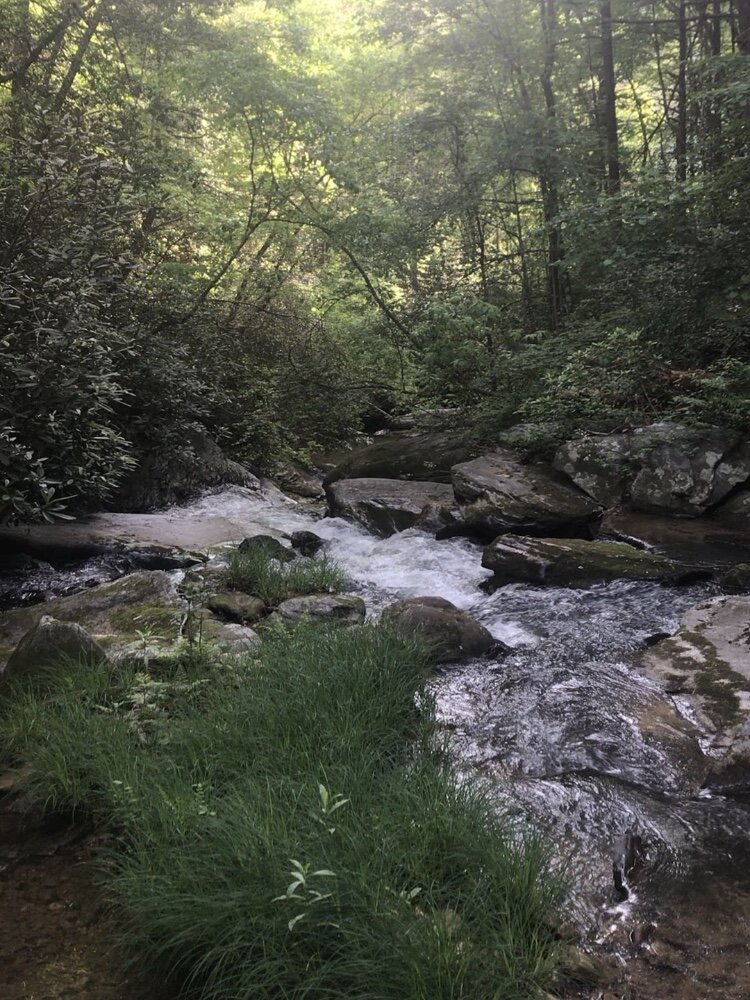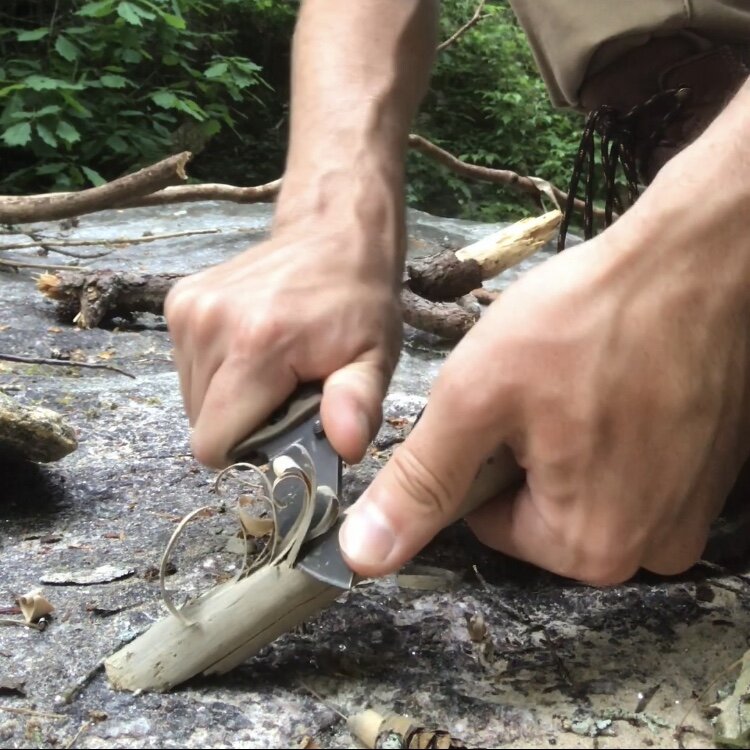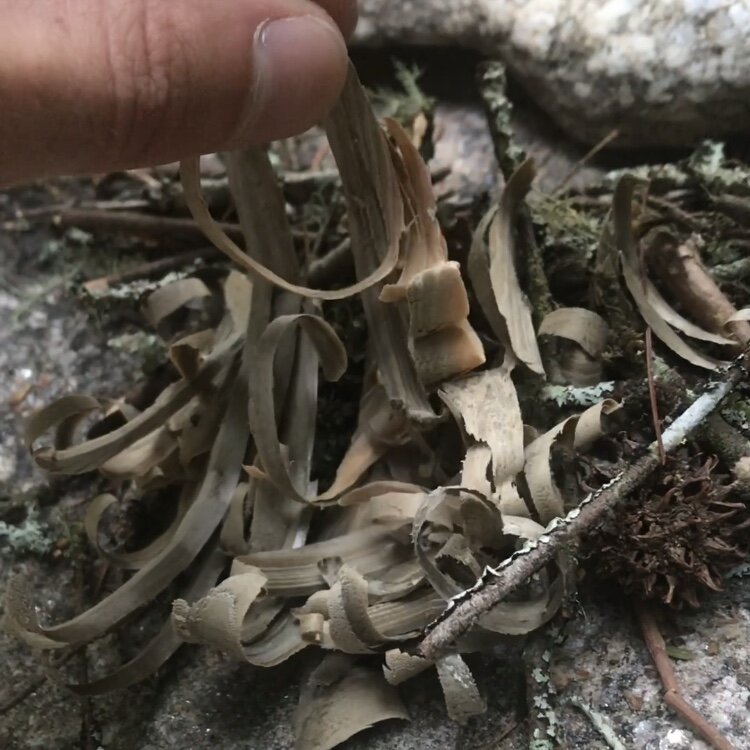My Scariest Field Recording Trip
This trip was terrifying, empowering and made one good field recording.
During the third weekend of May, I prepared for a field recording trip. I charged my batteries, packed my gear and made a few PB&Js. In the morning, I left for the Sumter National Forest.
Upon arrival, I met another camper and we decided that since he had not camped the area in a long time, I would camp in a remote area and he would take the primary spot.
We hiked for about 1.5 miles and talked about trees, rivers and medicinal plants before splitting up. This is where my journey into the wilderness began. As my friend headed down the trail, I was faced with a wall of rhododendron and mountain laurel.
I had explored here before so I knew how to find my way to the stream I was after. The closer I got to the stream, the steeper the slope became and the denser the vegetation grew. By the time I could see the tributary, I had to crawl under branches to prevent my pack from getting hung up in the limbs. Tired and sweaty, I had arrived!
I walked down stream a little ways, put my pack down on a rock and went for a swim in a beautiful pool. I wish I had been able to photograph this spot but I had to swim to get there so my phone had to stay behind. I enjoyed this area for a long time. Swimming, sunbathing and meditating outlined my afternoon.
Back at camp, I tried to find a good spot to set up my hammock. Due to the density of the rhododendron and mountain laurel, there were not many trees near the river and I didn’t want to hike up that ridge so I decided to bed down on a rock.
This would have been my first experience sleeping in the open air. I’ve slept in a tent with the rain fly off, but I was still enclosed by the mesh walls of the tent.
At this point, it was 5 o’clock. The sun would set tonight at 8:27pm, but I would lose the sun sooner than because of the surrounding ridge line. So, I took advantage of the light and gathered wood for a fire. Since my PB&Js didn’t need cooking, I only gathered enough wood for a small fire. I love fire and if circumstances allow for one, I’ll always have a fire when camping.
After gathering the wood, I made some fire sticks out of hemlock. I like using coniferous wood for this because of the flammable resin impregnated in the wood. This resin protects the wood from insects even when dead and makes this wood easy to spot. It will be completely stripped of bark but look oddly “fresh” in comparison to decomposing hard woods like oak or maple.
Here’s a video of my trip up to this point.
Once I had enough tinder I broke my wood down into 3 sizes from small twigs to large branches. With my fire work complete, I ate dinner and put my pack 20 feet up in a tree on the other side of the stream. Then, I played my flute until sunset. As the sun went down, I lit the fire and enjoyed it until 10pm. This is when my experience really started.
As I watched the dying embers of my fire, I began hearing a low, almost human-like voice. It was a new sound that stood out to my ears. Because I was so close to the rushing water, it was difficult to pinpoint the direction of the sound. It was intermittent and I convinced myself that it was just the stream creating a strange noise. (I had a similar experience recently where what I thought was someone behind me turned out to be water. You can listen to that recording below.)
About five minutes later, the sound was much louder and motivated me to look around with my headlamp. I shined my light upstream but didn’t see anything. When I turned around to look down stream, I was filled with terror as my lamp reflected the eyes of a black bear only 15 feet away from me. In that moment, my instincts took over in a heartbeat.
I turned off my headlamp, slipped off the side of the rock and tucked myself into a small crevice the water had carved into the rock. In this shelter I gathered my thoughts. Imagining yourself being mauled to death by a bear in the night while submerged in a cold river under a rock is not a happy place.
I reached down, grabbed a big rock and quickly threw it toward where I saw the bear. I was hoping the noise would scare the bear away. Unfortunately, because the water was so loud, I couldn’t even tell if my rock ever even landed, let alone if it scared the bear away.
So, there I sat for probably 10 minutes trying to decide my next move. I knew I did not want to sleep here anymore but I was having a hard time deciding if I should get my backpack from the tree (that had my car keys in it) or if I should just leave and come back in the morning. In the end, because I would have to walk by where I saw the bear to get my pack, I decided to leave everything behind and hike out to my car.
Slowly, I made my way upstream to where I had entered earlier that day. That was the easy part. Next, I had to crawl back up the side of the gorge and make my way through that rhododendron. Going uphill is much more difficult because the sprawling limbs don’t want to bend that way and really block your passage.
Eventually I felt like I should be close to the trail but couldn’t find it. Thankfully I had service up here and was able to load the All Trails map. I was pretty far off target. About 20 minutes later and I was back at my car wondering what to do again.
I decided to call Progressive and use my roadside assistance to get someone to unlock my car for me. My plan was to change my soaked clothes and sleep in my car. Then, I would return to my camp in the morning and grab all of my gear. For an hour, I laid on the roof of my car looking at the stars and trying to stay warm. At midnight, they called me back to tell me no one could help me until morning.
As I looked at the weather on my phone, I felt like I only had one choice. It was going to drop another 10 degrees before sunrise and I was already freezing. I had to go back to my campsite and get my car keys.
I used most of my remaining battery life on researching black bears. I learned that they only stay awake 1-2 hours after sunset, are unlikely to attack people and creating noise is the best way to prevent running into one. With this knowledge, I felt confident returning to my campsite. Luckily, I still had my knife in my pocket and I used it and a rock to make a loud banging sound.
The closer I got to my campsite, the more nervous I became but I kept reminding myself about what I had learned and I beat that rock with my knife for all I was worth. I went straight for my backpack and, once I had it, I packed up my sleeping bag and pad and prepared to hike back to my car…again.
Now, with my pack on, the rhododendron was extremely frustrating. I got hung up in the dark so many times and literally had to crawl on my stomach to get through some sections. Because I had marked the exact location of the trail on my phone, I didn’t get lost this time. It felt so good to see that trail!
I made it back to my car at 2am. Even though I was exhausted and drenched, I felt extremely proud of myself. Going back to my camp that night was a fear I confronted and surmounted. This trip was a terrifying experience of growth!
I didn’t sleep for long and was woken by a beautiful dawn chorus. I grabbed my Sony D100 and put it on my roof to capture an awesome recording. Please listen to it below.
Support Acoustic Nature
If you enjoyed this post and would like to help support Acoustic Nature, please consider "buying me a coffee" or becoming a Patreon with the buttons below.
As a thank you for your support, Patreon supporters receive a copy of Field Recording For Beginners, exclusive access to the full Behind The Sounds video series, nature sound library downloads, and more.
If you are unable to support the site financially, please share this post with others, or leave a comment below letting me know you enjoyed this post! Both are free and help the website grow. Thank you ♫
Thanks for reading,
-Jared














